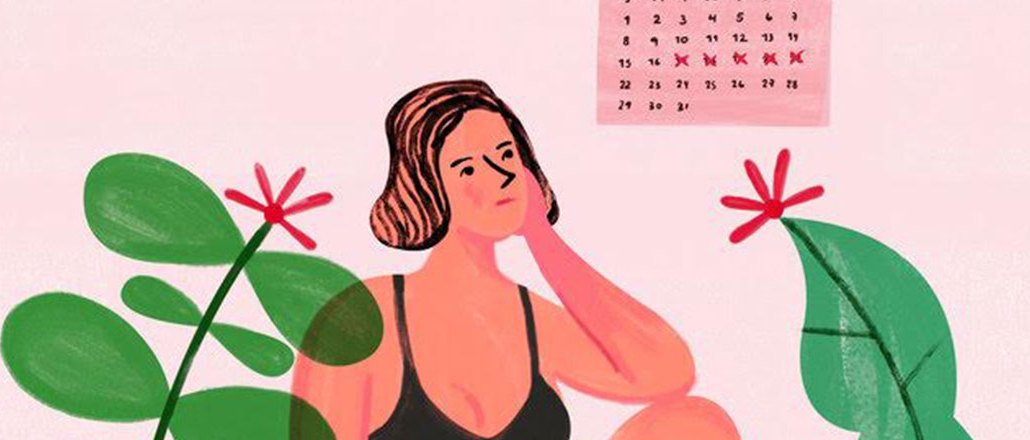
Tricked out with whimsical illustrations and memes, Bustle’s Instagram feed doesn’t resemble that of a typical digital publisher’s.
The women’s news and lifestyle site features playful drawings is a key part of its brand-building strategy. A comparison of how many items are bought on a grocery trip on a normal day to one where you’re “slightly hungry” sits snugly alongside a pie-chart on why yoga pants are so popular (hint: it has little to do with yoga) — and both serve to get its readers clicking.
The idea behind the illustrations is to tell stories in a unique way. While many publishers are pouring resources into video creation, Bustle is making something of a contrarian bet on original drawings, employing a dozen illustrators to create whimsical infographics, memes and cartoons.
“You’re able to highlight something you’re pulling out from copy in a way that you might not be able to do with a photograph,” said Bustle’s creative director Isla Murray. “Photos take a lot of prep work, but with illustrations in-house you’re able to iterate and design something fast.”
One example includes the article “The one infographic about our gun laws that will stun you,” which uses a graphic to show the different steps required to buy a gun (one) compared to the steps required for a woman to have an abortion (multiple).
Both the design and editorial teams are responsible for coming up with ideas for illustrations. On an average day, between eight and 10 drawings will be completed for articles, social media or branded content. Many appear as if they’re hand-drawn, but they’re actually done in Adobe Illustrator.
The design and social team meets weekly to come up with five original meme ideas a week, Wurtzel said. Designers and illustrators work with reporters to produce a visual pieces. In the early days, Bustle’s social media team of four, recognized popular Instagram accounts often featured witty memes.
“We’ve chosen to use [Instagram] as our humor space,” said Caroline Wurtzel, a Bustle designer.
“Our designers and editors are millennial women, we are our audience. If it resonates with us, chances are our audience will enjoy it,” added Hayley Saltzman, deputy editor of social media.
The social media team also saw that memes drove high audience engagement. Bustle has also found there’s audience appetite for stories in the form of interactive flowcharts, which are illustrated and take the reader on a journey through a series of questions and answers. After introducing the charts last year, they now have their own tab on Bustle’s website and include charts like, “A timeline of Donald Trump’s most criticized moments along the campaign trail.”
“Adulting” is also a fertile area for the millennial-focused site. A recent illustration that compares the feeling to the reality of pulling yourself up off the couch to brush your teeth got 29,600 likes. Another post, “Stages of my paycheck,” which begins with a drawing of a “fancy latte” then a large coffee to a small tea, then finally hot water, also resonated with a large chunk of Bustle’s 763,000 followers and the comments were sprinkled with the laughing-tears-in-the-eyes emoji throughout.
“When people are tagging friends in comments, or there’s a lot saying, ‘this is so true and me,’ we see that as a success,” Saltzman said about defining success.
For publishers, it can be a challenge to have a distinct visual presence on social media, but illustration offers that, said Chris Gilbert, senior strategist at digital agency Kettle. Having an in-house design team also means Bustle has complete creative control, he added.
“It allows them to be unique and stand out.” He said illustration is also much quicker than having to organize photoshoots, which can often be quite expensive too. “The speed at which cultural insights and trends move these days, illustration allows you to move very quickly.”
More in Media

From sidelines to spotlight: Esports events are putting creators center stage
Esports events’ embrace of content creators reflects advertisers’ changing priorities across both gaming and the wider culture. In the past, marketers viewed esports as one of the best ways to reach gamers. In 2025, brands are instead prioritizing creators in their outreach to audiences across demographics and interest areas, including gaming.

Condé Nast and Hearst strike Amazon AI licensing deals for Rufus
Condé Nast and Hearst have joined the New York Times in signing a licensing deal with Amazon for its AI-powered shopping assistant Rufus.

Media Briefing: AI payouts may be entering a new era
AI compensation is evolving — and new models, not just publisher demands, are driving the shift beyond flat-fee licensing.





